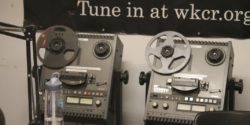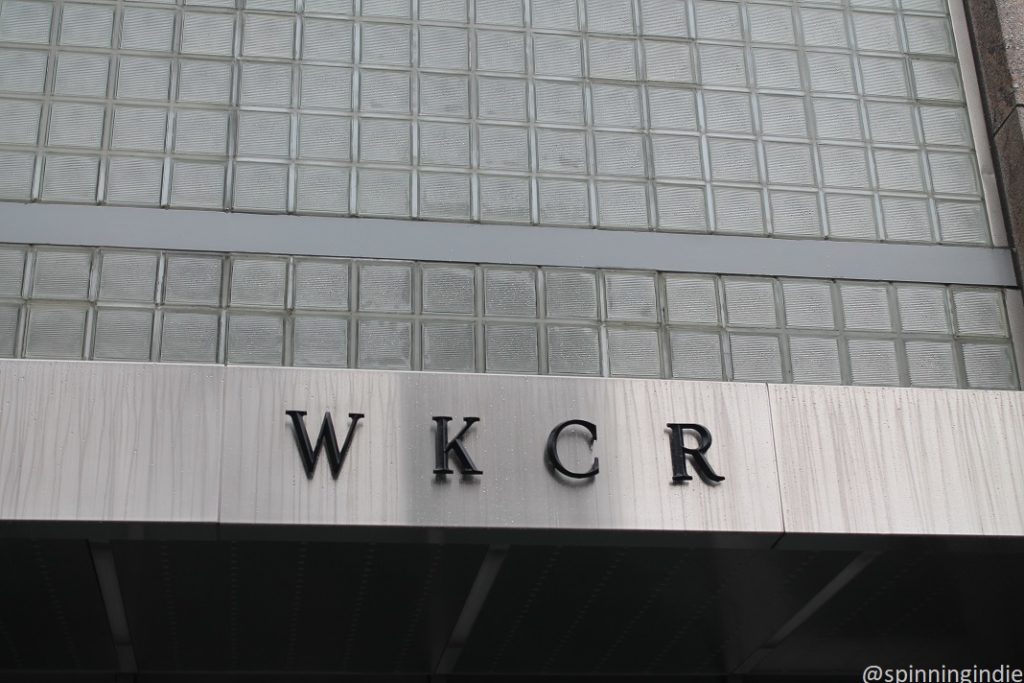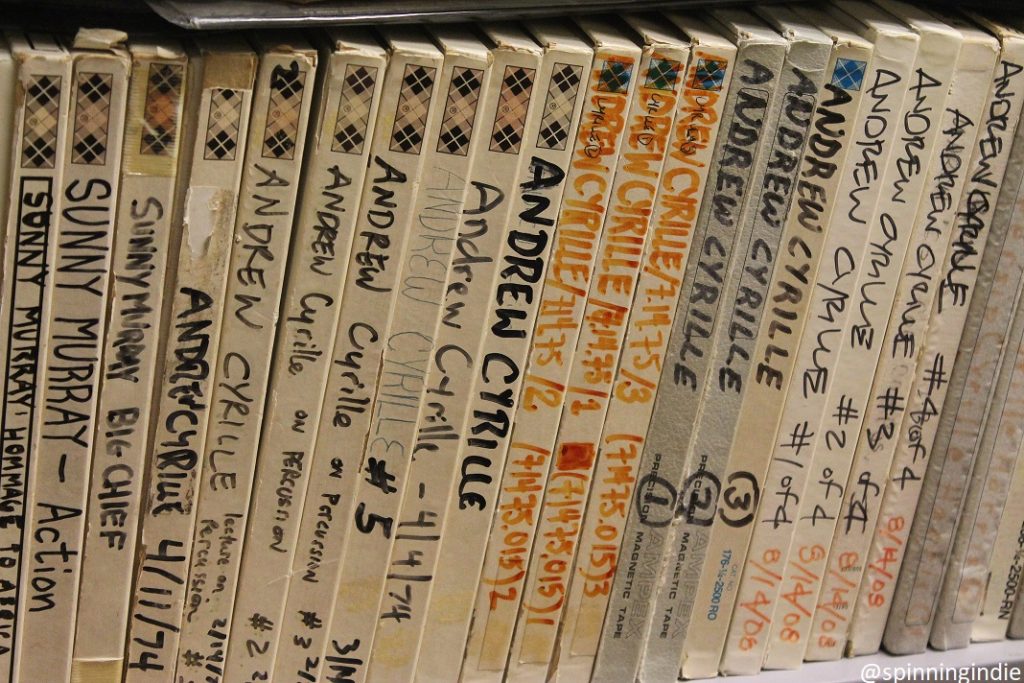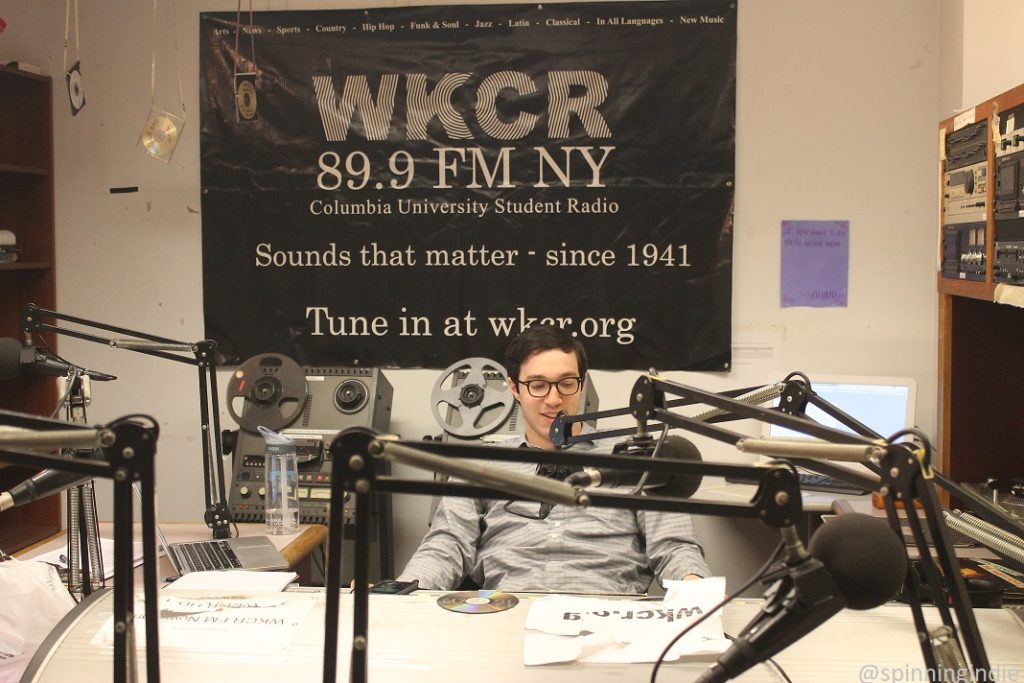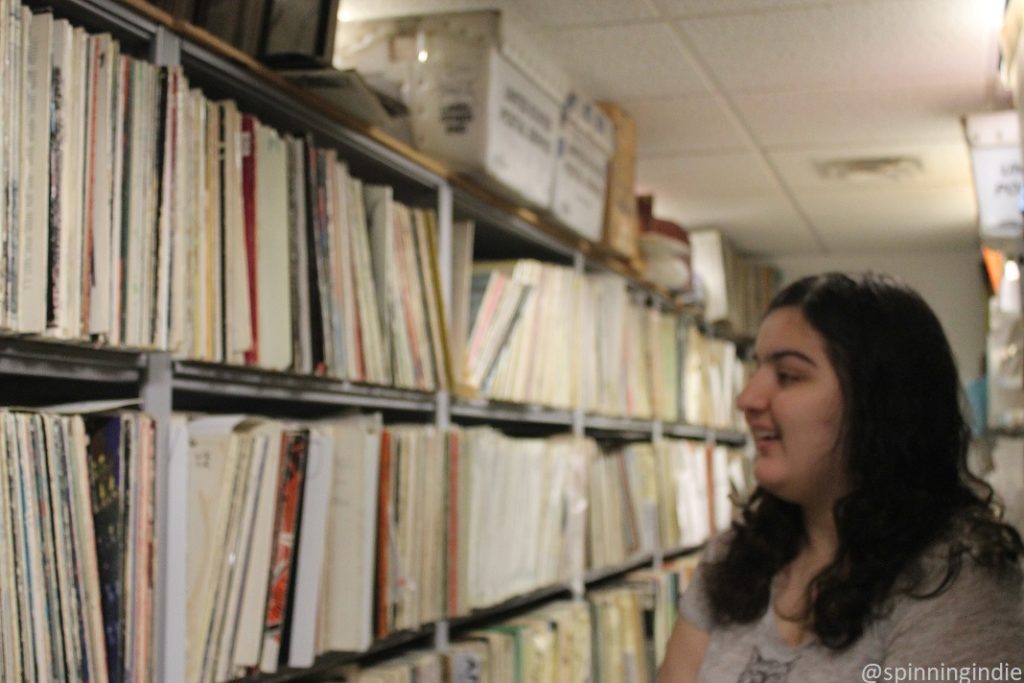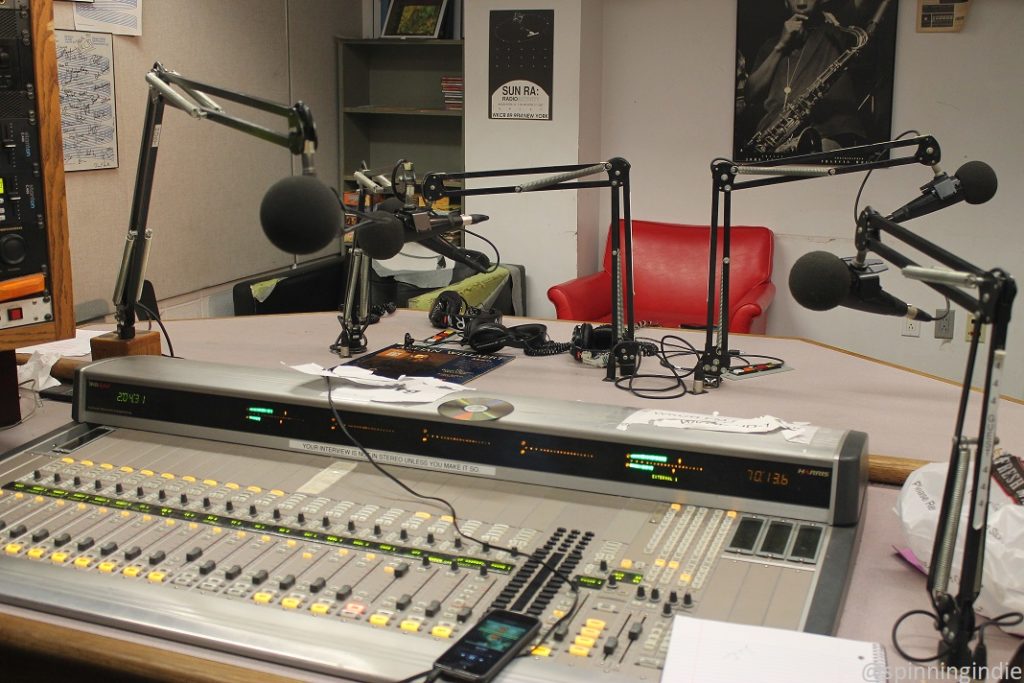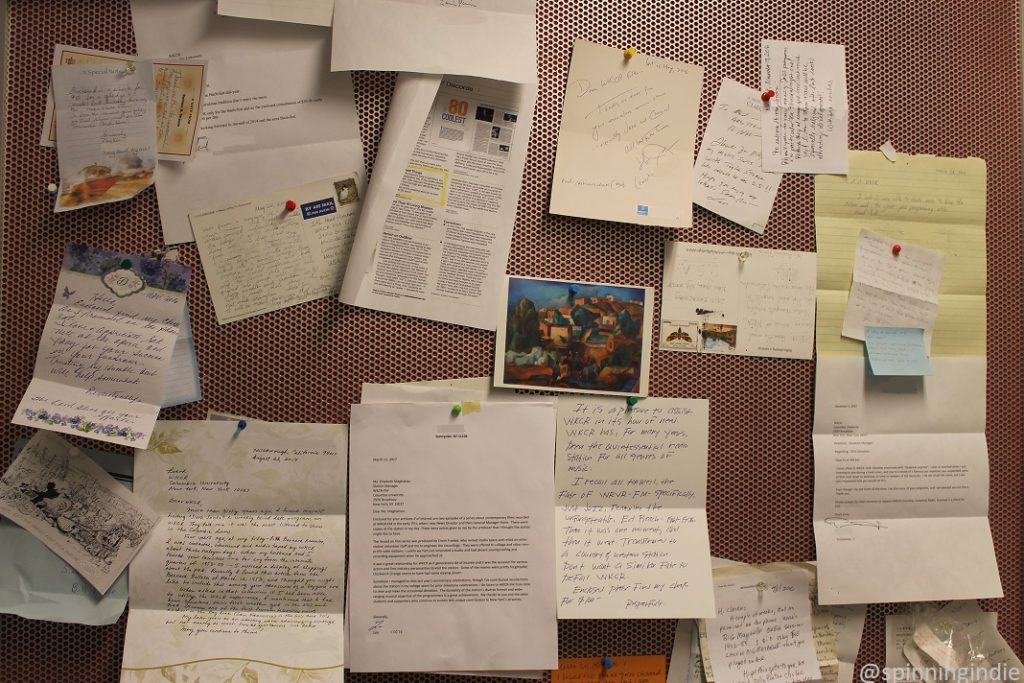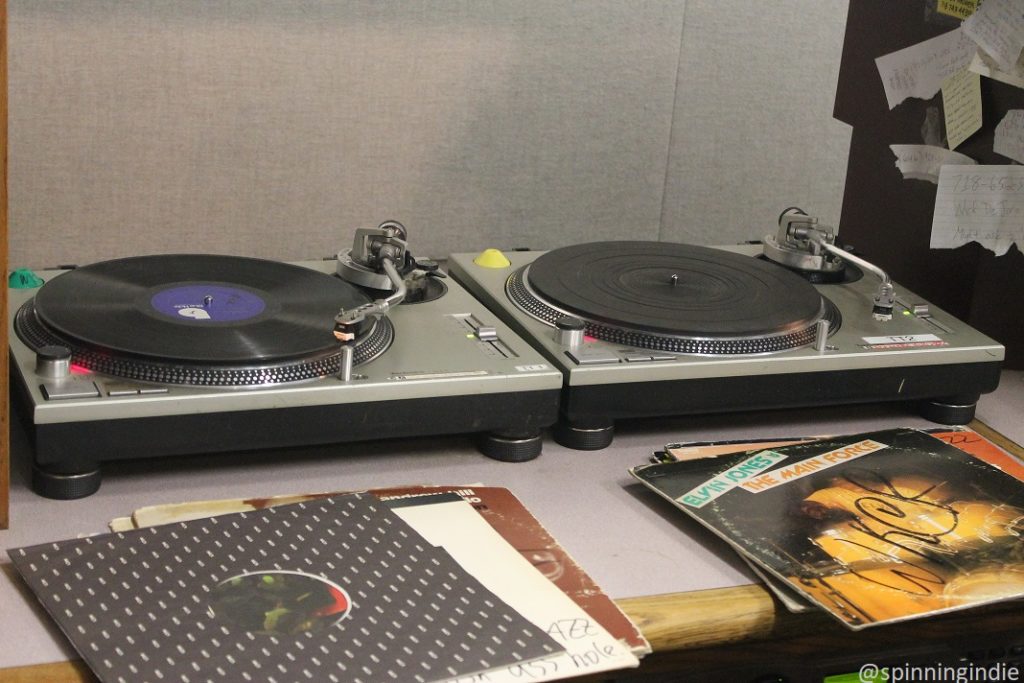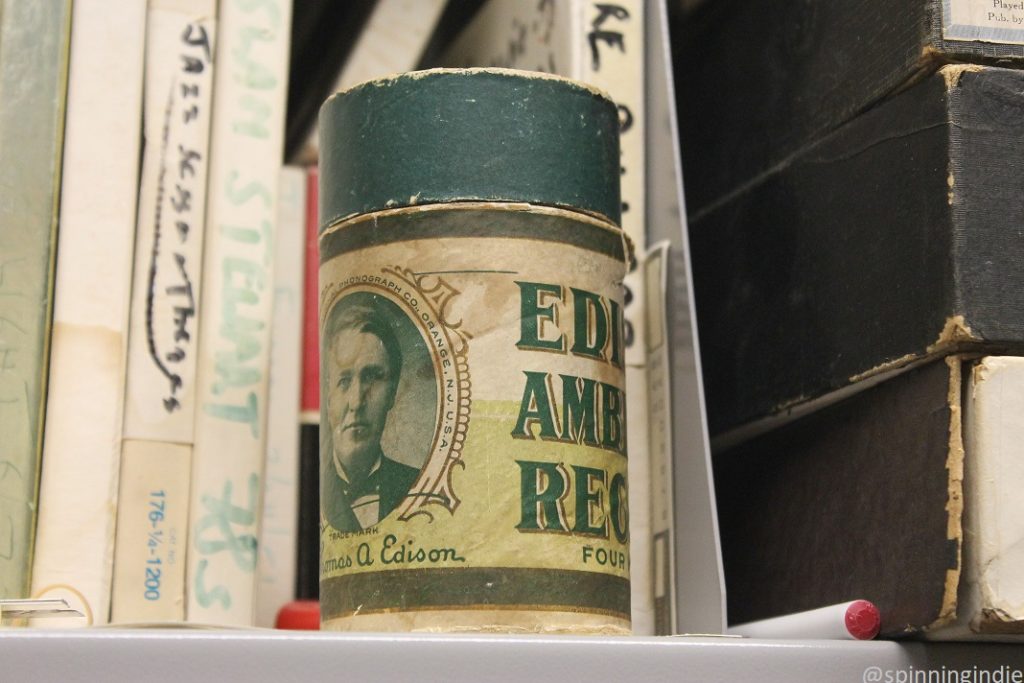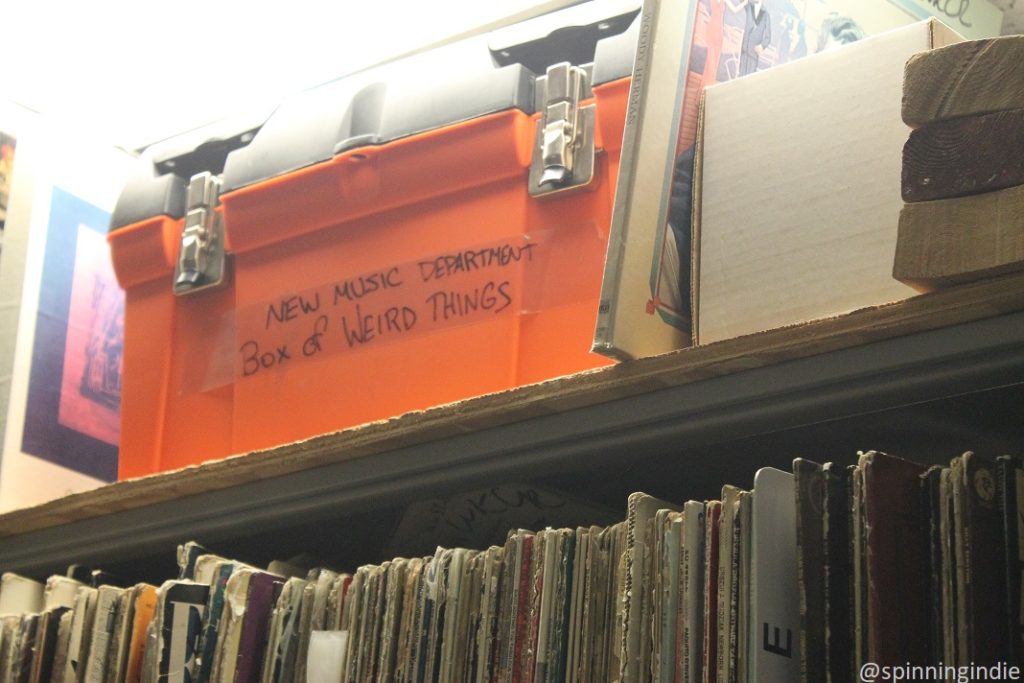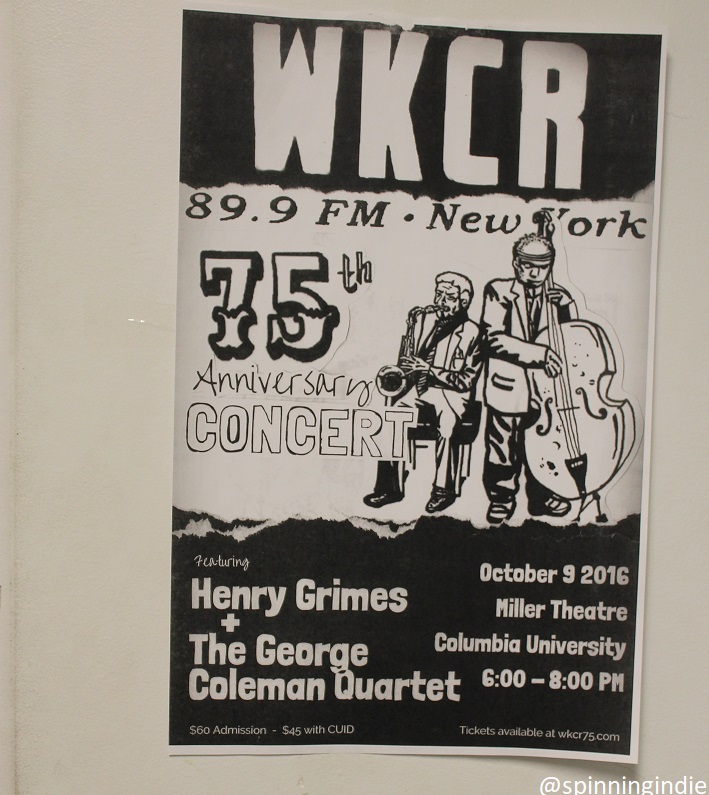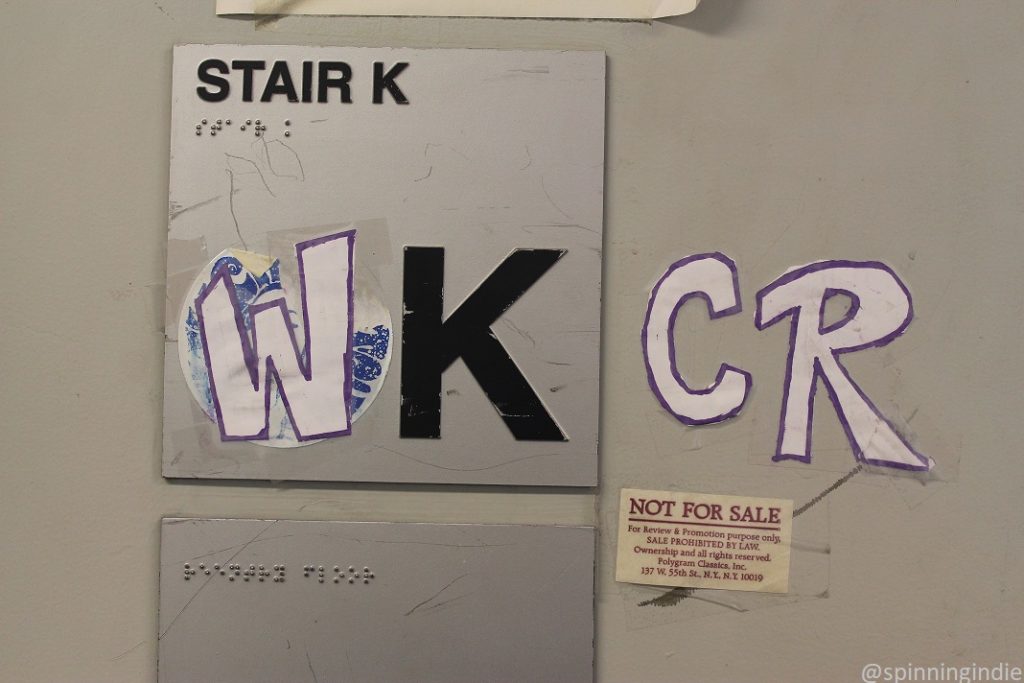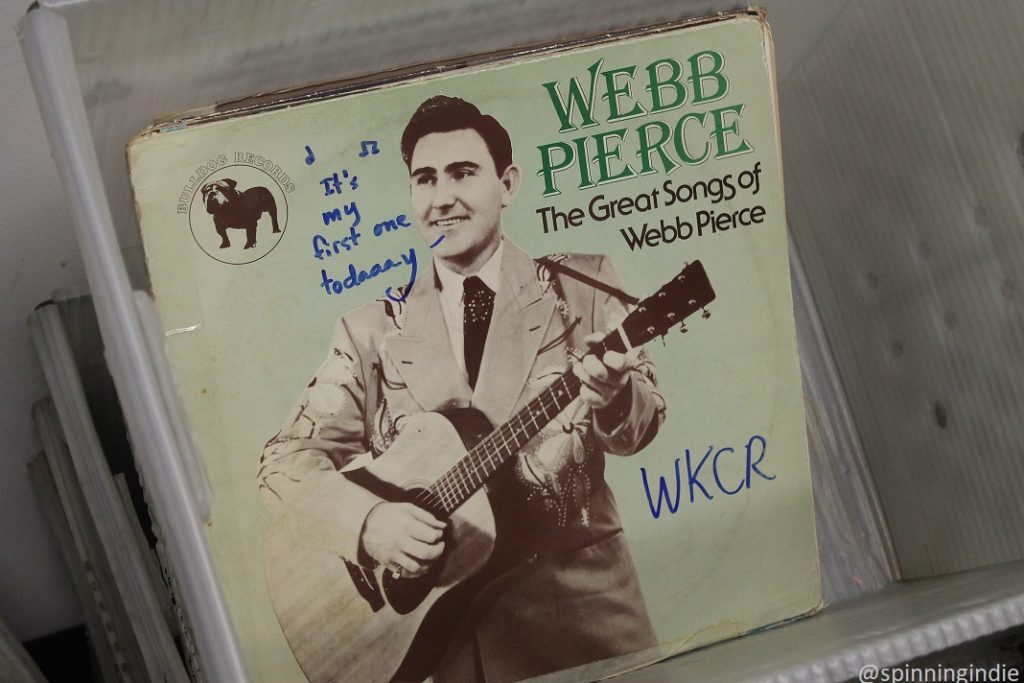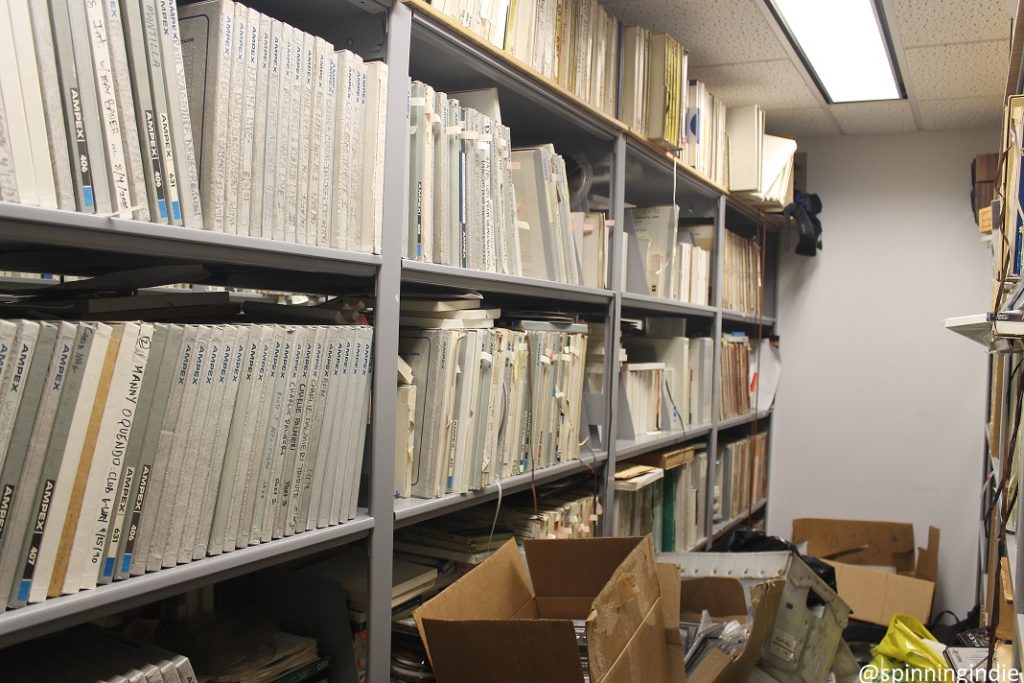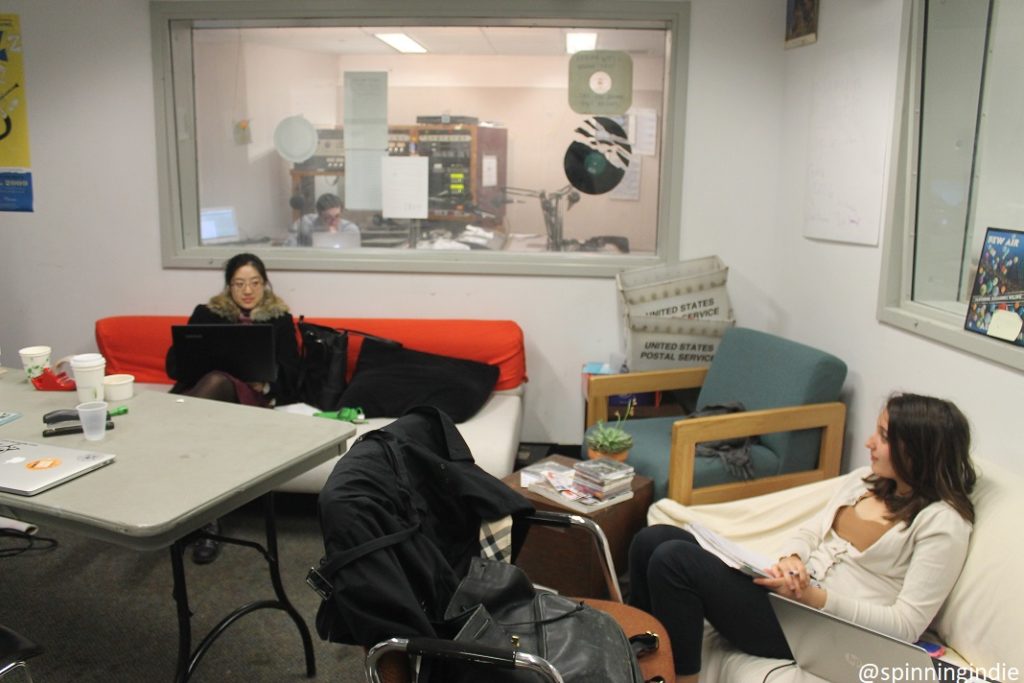On a rainy New York City day this spring, I headed to Morningside Heights in upper Manhattan for a visit to Columbia University’s college radio station WKCR 89.9 FM. The 76-year-old station has a deep respect for its history and I was delighted to see numerous reel-to-reel players, an entire room full of vintage audio recordings, and an active library of physical music.
A bit different from many college radio stations, WKCR’s format steers away from rock and pop, instead focusing on lesser-heard radio genres, including jazz, classical, new music (experimental), international music (under the In All Languages moniker) Latin music, and a wide range of under-represented American genres (blues, gospel, bluegrass, underground hip hop, soul, funk, and country). WKCR also produces news, sports and arts programming. A notable tradition at the station is marathon broadcasts to celebrate birthdays or memorialize musicians of note. Most recently, the station remembered free jazz drummer Sunny Murray with a nine-hour special on Sunday, December 10, 2017.
Although it’s student-run, WKCR has mostly a non-student listening audience in both the New York market (where it broadcasts at 89.9 FM) and all over the world online. DJs and hosts have included not only students, but also Columbia University staff members and alumni, with some having started at the station as far back as the 1970s.
WKCR Station Manager Elizabeth Maghakian, a sophomore at the time of my March, 2017 visit, toured me around the station. Aware of WKCR before she was a Columbia student, she joined up with the station in the spring semester of her first year in college and initially was an intern on the Tuesday night blues show, which she continued to host at the time of my visit. Always interested in music, particularly the type not played on typical radio stations, Maghakian started listening to WKCR while in high school (she’s from Manhattan).
Whereas many of her classmate aren’t necessarily WKCR listeners, Maghakian told me that her friends will tune in to hear her show. Over the years she’s also made many friends at WKCR and she said that the station’s volunteers are not only passionate about music, but also about WKCR. As testament to that, she reminisced with me about a time that she spent 36 hours at the station during a blizzard.
Additionally, the connection with the outside community of listeners is gratifying to those working at WKCR. Maghakian shared a few anecdotes, including the story of a long-time gospel show listener who doesn’t have the mobility to make it to church anymore, but who reports that the WKCR gospel show is a “staple” of their spiritual life. She also remembered a 3:30am call from a listener who had been in a terrible mood for weeks, but recounted that after hearing a particular track on WKCR, his mood lifted. Interactions like that are some of Maghakian’s favorite moments at the radio station.
With around 100 on-air hosts, WKCR attracts about 20 new interns every semester. Live programming runs 24 hours a day, 7 days a week. DJs play music from WKCR’s music library of CDs and vinyl, but also from their own collections of digital and physical music. A few hosts will play material from cassette tapes and reel-to-reel recordings, particularly vintage material or difficult to find releases.
Although Columbia is associated with FM radio experiments in the 1930s, student radio began at Columbia in February 1941 with a closed-circuit campus-only station launched as CURC (the Columbia University Radio Club), with FCC-licensing arriving later that year. According to WKCR,
On July 18, 1939, a 400-foot antenna tower in Alpine, New Jersey broadcast the very first FM transmission. Edwin H. Armstrong, a Columbia University professor, was the first to develop this alternative to traditional AM broadcasts. WKCR shares a history with Armstrong and his groundbreaking work, accounting for the marginally accurate phrase, “The Original FM” occasionally heard on-air. Beginning as the Columbia University Radio Club (CURC) as early as 1936, the organization was not a radio station as we know it, but rather an organization concerned with the technology of radio communications. As membership grew, however, the nascent club turned its efforts to broadcasting. Armstrong helped the students in their early efforts, donating a microphone and turntables when they designed their first makeshift studio in a dorm room (1107 John Jay, to be precise).
Call letters WKCR appeared later in the 1940s, a reference to “King’s Crown Radio.” Broadcasting over AM, with occasional FM experiments; WKCR launched over FM in 1956. For a period of time, AM and FM stations co-existed on campus, with each having a distinct personality (AM reportedly more casual, FM more polished).
Renowned for its jazz programming, WKCR has hosted an enviable list of musical greats over the decades. Longtime DJ and jazz historian Phil Schaap started at the station in 1970 and hosts several shows today. In a 1992 interview, he recounted a bit of jazz history at Columbia, saying:
And unlike its Ivy League brethren colleges, Columbia had this proximity to the jazz world — not exactly situated in Harlem, but close enough that a great deal of night life in Harlem, and indeed of jazz nightlife in NYC, was picked up on by students. This tradition of Columbia students’ interest in jazz predates the formalization of WKCR. The earliest jazz critics were Columbia students. Barry Ulanov, who was class of ’39, went on to become the editor of Metronome. Jack Kerouac, class of ’43, and the Avakian brothers — Al and George, although George did not go to Columbia — were writing jazz reviews as high school students at Horace Mann, up on 120th St. inside Teacher’s College. Then you had Ralph Gleason, class of ’36, one of the great jazz writers.
When Schaap got to the station in 1970, he was part of the group of folks that worked to develop a roster of jazz programming. He explained,
Jamie Katz, who’s the son of pianist Dick Katz and has a lot on the ball, got here when the station was in its key period of transition. Jamie got a toehold for jazz, and I arrived immediately thereafter, in February of 1970. Jamie envisioned real expansion of jazz programming. In his junior year, he went away, and what happened then was very quick…We took a series of decisions by the station…and were going to offer a cultural forum to answer needs of listening in the NYC area as opposed to Columbia campus — and from that comes a jazz department.
Today, WKCR has nine distinct departments highlighting music and news that is alternative to what might be found on other stations. Genres of focus include American (folk, hip hop, blues, gospel, country, soul, funk, etc.), Classical, Jazz, Latin (WKCR first started airing salsa music in 1970), New Music (think noise, electronic music, John Cage, etc.) and “In all Languages.” Current “In all Languages” shows focus on a variety of genres and regions, including African music, reggae from Jamaica, South Asian music, field recordings, music of the Middle East and North Africa, modern music from China, and classical music from around the world. News, Arts, and Sports round out the schedule.
Although show hosts may change over the years as students come and go, the general schedule remains fairly consistent, as far as blocks of programming. One project underway is to work go through WKCR’s massive collection of reel-to-reel recordings, including some interviews that may have only aired once when originally recorded. It was a thrill for me to peek behind the scenes to see shelves full of materials and I hope the station is able catalog them more fully. Some historic WKCR student news recordings made during the 1968 student strike at Columbia have already been digitized. Listen to a bit of that material here.
In reflecting on her time at WKCR, Maghakian told me that she appreciated the community at the station as well as the connections she has with listeners. She explained, “We get some people who call in and say…’I just found out about your station and I thought maybe you were just a jazz station, but then I tuned in at a different time and it was like country music that I like’…. I love people discovering the station…I love our listeners a lot and I love the people who program here a lot…I think it’s definitely a community that we care for each other and we care for our listeners and I think that’s really valuable.”
Thanks to Elizabeth Maghakian for touring me around WKCR and to everyone at the station for allowing me to be a fly on the wall on Friday, March 31. 4/4/18 Update: Hear some of my interview with Maghakian on Radio Survivor Podcast #136, during which I discuss my visits to WKCR and WIIT.
This is my 141st radio station field trip report, with more to come from travels in Washington, D.C. and Chicago. My most recent field trips are located on Radio Survivor and a full list of all my station tour reports is archived on Spinning Indie.

